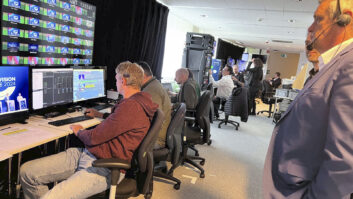As consumers increasingly opt to get their TV through OTT services distributed over HTTP-based CDN networks rather than traditional packages, many service providers now need to use multiple networks to deliver their content. Ovum predicts that spend on CDN services will grow from just under $11 billion in 2018 to nearly $16 billion in 2023. This upsurge is because multi-CDN environments provide increased reach, redundancy and flexibility around peak traffic. So having a choice of CDNs to use becomes critical to ensuring fast, buffer-free streams that meet viewers’ increasingly high standards.
There are, however, some very real issues when distributing TV content over the internet in a multi-CDN environment. The quality of the OTT TV delivery, for example, is left in the hands of the CDN provider. Content distributors, therefore, have limited visibility and no means to instantaneously fix any potential issues that may arise during the streaming session.
So what are the key challenges facing OTT TV providers and how they can be overcome?
Limited control and measurement options
By relying on multiple third-party CDNs rather than having their own CDN infrastructure, OTT TV providers are losing overall control and insight of the end user experience when streaming media.
In OTT streaming, the vast majority of decisions are negotiated between the client and the CDN. This means that even the service providers themselves are outside of the decision loop. The client autonomously takes decisions about what media to fetch from a menu of variants, significantly limiting visibility into the customer experience and making it difficult for the content provider to know what actions to take in order to fix possible quality issues.
Quality of Experience (QoE) information and insight into how viewers are experiencing content can be provided using client-side solutions, but this requires client integration, which can be a considerable drawback. And with today’s explosion of client devices, it’s hard to reach 100 per cent coverage. The current client landscape is more fragmented than ever, consisting of an ever-growing mix of brands, models and versions. Integrating with client devices, therefore, becomes complex, time-consuming and costly – often ending with the provider sampling a subset of clients instead of all of them.
This is all made even more complicated by the fact that each CDN comes with its own features and capabilities. Because these are not standardised, there is a risk that one CDN’s capabilities cannot be provided by another. This makes it difficult to create one overall control functionality that works independently of which network is delivering the content.
Limited options to impact the service quality in real time
A multi-CDN approach typically involves relying on third-party CDN services, rather than distributing the content over a fully managed network. This means broadcasters and content distributors are in the hands of the CDN provider when it comes to acting on potential problems with the quality of the TV service.
The issue is that they lack instant access and the ability to act on key session data. This can include bitrate, the timing between segment requests, the type of device used, the video format and performance data from all delivering CDNs. As a result, a potential service complaint could easily end up in an SLA review, but won’t be resolved during the ongoing TV show. This will heavily impact that customer’s quality experience and may put them off from using the service in the future.
So, the ability to proactively identify potential drops in performance and manage the OTT TV delivery in real time – before a potential quality issue arises – is very limited.
These two challenges highlight some key questions for content providers. Firstly, is there a way to gain visibility into their customers’ QoE without having to integrate with the client devices? And secondly, is there a way to control OTT TV content delivery across multiple CDNs even if they don’t own and manage the CDN infrastructure themselves?
How content providers can take control
The good news is that the answer to both of these questions is yes.
In today’s age of OTT TV where QoE is one important success factor, content providers have to find a way to take back control of the delivery of their content and gain visibility into the QoE without having to go down the client integration route.
One of the most effective ways of doing this is to introduce a control plane-based model that can, in real time, select the optimal delivery on a per-segment granularity, independent of both client and CDN.
Such a model can provide a new level of control when it comes to multi-CDN delivery and bring content providers back into the loop, between the client and the CDN. Sitting in the control plane allows the content provider to orchestrate the delivery of streamed media and decide – at a granular level – where each segment request should be directed, i.e. which CDN should deliver it.
Giving content distributors independence towards both CDN providers and clients for both features and quality, thus avoiding any complicated client integration, is a strategic position to be in. Every segment request can be measured and should a problem occur, the session can be moved to another CDN to overcome it. What’s more, the common denominator for the sessions experiencing a problem – whether source, client, geography or content related – can be quickly identified and actions can be taken for other clients in that same group.
This approach would also enable content distributors to act in real time before a drop in quality impacts the subscriber’s viewing experience. And it means that it won’t end up in an SLA review a month later.
Providers have to be prepared to take control of their TV delivery in multi-CDN environments as the move towards OTT content continues. A control plane-based approach can put the control back in their hands. It gives them the power to switch, modify and terminate sessions in real time, and avoid dependency to clients or CDNs to deliver the best possible service and experience to their viewers.







